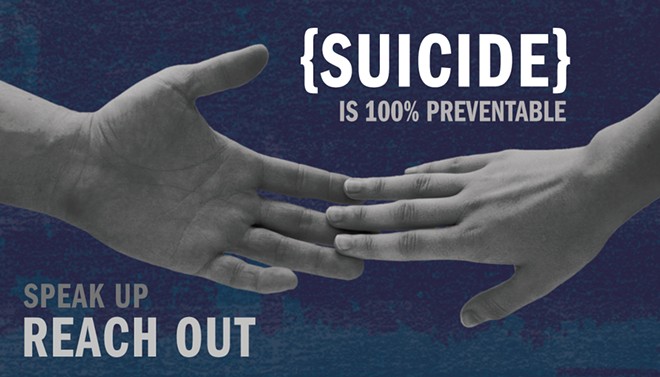CDC Begins Investigation on Stark County Suicide Cluster After 12 Adolescent Deaths in Less Than a Year
By BJ Colangelo on Wed, Apr 4, 2018 at 2:34 pm
[
{
"name": "Ad - NativeInline - Injected",
"component": "38482495",
"insertPoint": "3",
"requiredCountToDisplay": "5"
},{
"name": "Real 1 Player (r2) - Inline",
"component": "38482494",
"insertPoint": "2/3",
"requiredCountToDisplay": "9"
}
]
In the last seven months, the communities in Stark County have experienced a concerning and tragic trend. Twelve teens in the Perry, Plain, Jackson, Northwest, and Canton local school districts have committed suicide. The Centers for Disease Control and Prevention (CDC) have arrived in Stark County to begin a two-week site visit in an attempt to detect the motivations and connections between a dozen suicides in an isolated location.
Ohio Department of Health data from 2017 revealed that Ohio experienced a greater loss of young people to suicide than in the previous 10 years, with a staggering 111 reported suicides. According to the Stark County coroner’s office, there were an average of three suicides a year for the previous three years leading to this current cluster. By definition, a suicide cluster is a chain of completed suicides (usually among adolescents) in a discrete period of time and area that have a ‘contagious’ element. After the sixth suicide, Carole Vesely of the Crisis Intervention and Recovery Center stated, “from a behavioral perspective, we’re looking at this as a contagion. And when it gets to that perspective and that proportion, we have to have the entire community onboard to help us.”
Since Ms. Vesely’s comment, Stark County has seen six more suicides.
Public perception of the CDC may be more commonly associated with their work regarding outbreaks of physical diseases, but the CDC is also dedicated to determining the risk factors that increase social public health issues, like suicide, and to establishing preventative steps to promote resilience.
Most recently, in 2016 and 2017, the CDC launched a similar investigation in Santa Clara County in California after a cluster of youth suicides. Their investigation followed the death of 10 students in an area with a suicide rate that is five times the national average. Based on their findings, it noted that the academic stress of middle school students was causing depression. The school later discontinued early morning classes. The height of fences surrounding an area of train tracks where students commonly committed suicide was also extended and security cameras were installed.
The investigation also determined mental health issues like depression, anxiety, and bipolar disorder, in addition to crises at school, were contributing factors to the suicides. The CDC urged the community to be aware of signs of mental distress and encouraged trusted relationships developed between students and teachers or adults as a way to have a trusted outlet to communicate any possible suicidal thoughts.
The work done by the CDC in Stark County is extremely valuable, as much of the research regarding suicide clusters was completed before the advent and popularity of social media. It is estimated that suicide clusters account for only 1-5% of all suicide related deaths, but according to suicidologist Dr. Madelyn Gould, “they represent a class of suicides that may be particularly preventable.” In the United States, suicide is currently the third leading cause of death of people between the ages of 15 and 24. For comparison’s sake, death by gun violence is only the 50th leading cause of death.
If you or anyone you know is experiencing suicidal thoughts, the following resources are available 24/7:
Suicide Prevention Lifeline: 1-800-273-8255
Teens in Abusive Relationships: 1-866-332-9474 (or text “loveis” to 22522)
The Trevor Project (LGBTQ youth): 1-866-488-7386
Or text “741741” from anywhere in the United States to text with a trained counselor.
Tags:
SCENE Supporters make it possible to tell the Cleveland stories you won’t find elsewhere.
Become a supporter today.
About The Author
Scroll to read more Cleveland News articles
Newsletters
Join Cleveland Scene Newsletters
Subscribe now to get the latest news delivered right to your inbox.














